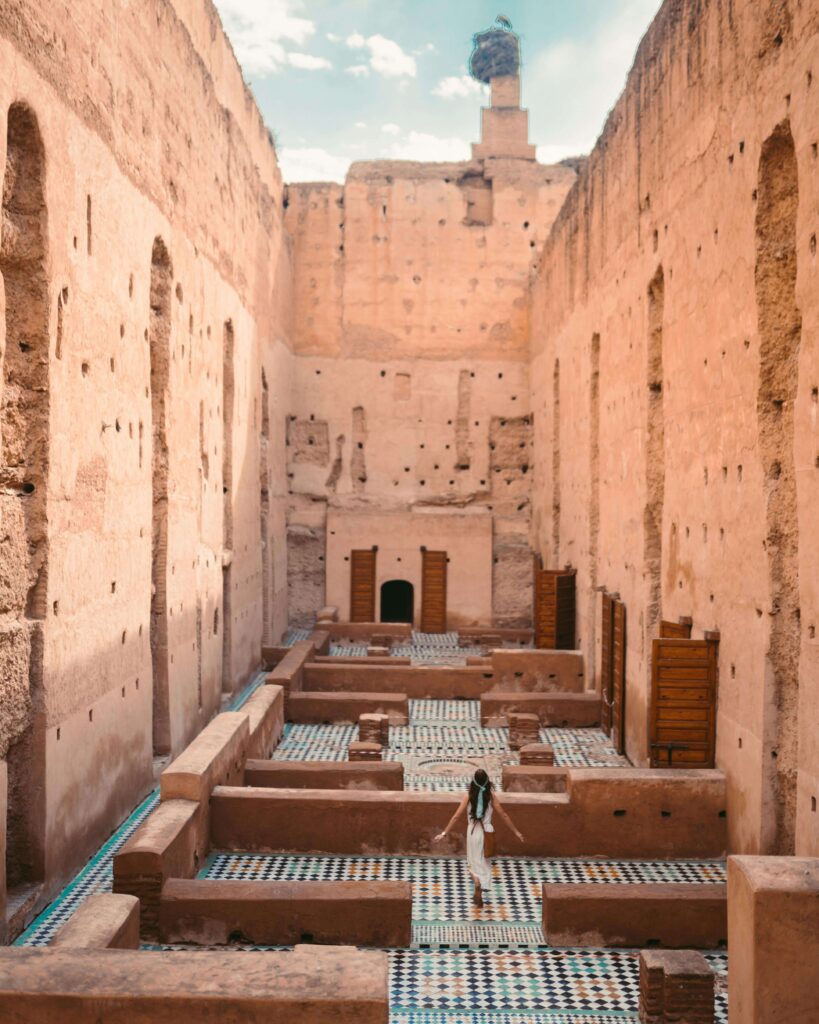
Marrakech, often referred to as the “Red City,” is a vibrant destination that offers a rich tapestry of history, culture, and architectural beauty. Known for its bustling medina, lively souks, and exquisite palaces, Marrakech is a city that rewards those who venture beyond the well-trodden paths. While iconic landmarks like the Koutoubia Mosque and Jardin Majorelle attract many visitors, the city is also home to numerous historical hidden gems that offer a glimpse into its fascinating past. In this article, we will explore some of Marrakech’s lesser-known historical sites that are waiting to be discovered.
The Allure of Marrakech’s Hidden Gems
Marrakech has been a significant cultural and trading hub for centuries, influenced by a blend of Berber, Arab, and French cultures. This unique mix is evident in the city’s architecture, cuisine, and traditions. For travelers seeking a deeper understanding of Marrakech’s history, exploring its hidden gems offers an enriching experience away from the crowds.
The Saadian Tombs: A Royal Necropolis
Located near the Kasbah Mosque, the Saadian Tombs are a remarkable testament to the grandeur of the Saadian dynasty, which ruled Morocco from the 16th to the 17th century. Rediscovered in 1917, these tombs remained hidden for centuries behind a wall built by Sultan Moulay Ismail.
The tombs are the final resting place of over 60 members of the Saadian dynasty, including Sultan Ahmed al-Mansour, who was known for his lavish lifestyle and significant contributions to Moroccan architecture. The mausoleum is adorned with intricate stucco work, colorful zellij (mosaic tilework), and marble columns, making it a stunning example of Moroccan craftsmanship.
The Mellah: A Window into Jewish Heritage

The Mellah is Marrakech’s historic Jewish quarter, offering insight into the city’s diverse cultural history. Established in the 16th century, the Mellah was once home to a thriving Jewish community, and its narrow streets and historic buildings reflect this heritage.
Visitors can explore the Lazama Synagogue, one of the oldest synagogues in Morocco, which serves as a place of worship and a museum. The adjacent Jewish cemetery, with its centuries-old tombstones, provides a poignant glimpse into the lives of Marrakech’s Jewish residents. The Mellah’s vibrant history and cultural significance make it a fascinating area to explore.
Dar Si Said Museum: A Treasure Trove of Moroccan Art
Housed in a beautifully restored 19th-century palace, the Dar Si Said Museum is a hidden gem that showcases a rich collection of Moroccan art and artifacts. The museum’s exhibits include traditional Berber jewelry, textiles, ceramics, and intricate woodwork, providing visitors with an appreciation of Morocco’s diverse artistic heritage.
The palace itself is a work of art, with its ornate ceilings, colorful tiles, and tranquil courtyard garden. Exploring Dar Si Said offers a unique opportunity to experience the beauty of Moroccan craftsmanship and learn about the country’s cultural traditions.
El Badi Palace: Echoes of Past Splendor

While many visitors flock to the opulent Bahia Palace, the ruins of El Badi Palace offer a hauntingly beautiful glimpse into Marrakech’s past. Commissioned by Sultan Ahmed al-Mansour in the late 16th century, El Badi was once a magnificent palace renowned for its grandeur and luxury.
Today, the palace stands in ruins, with its vast courtyard, sunken gardens, and remnants of majestic pavilions providing a striking contrast to its former glory. Visitors can explore the underground passages and climb the ramparts for panoramic views of the city. El Badi Palace is a testament to Marrakech’s rich history and offers a quiet escape from the bustling city.
The Almoravid Koubba: A Glimpse of Ancient Architecture
Tucked away near the Marrakech Museum, the Almoravid Koubba is a small but historically significant structure that dates back to the 12th century. It is one of the few remaining examples of Almoravid architecture, providing a rare insight into the early architectural styles that influenced later Moroccan designs.
The koubba’s intricate stucco work and dome are a testament to the skilled craftsmanship of the time. Originally used as an ablution facility for the nearby mosque, the Almoravid Koubba is a fascinating relic of Marrakech’s ancient past.
Le Jardin Secret: An Oasis of Tranquility
In the heart of the medina, Le Jardin Secret offers a peaceful retreat from the hustle and bustle of Marrakech’s streets. This restored 19th-century garden complex consists of two distinct gardens: the Exotic Garden and the Islamic Garden, both designed to reflect traditional Moroccan landscaping principles.
Le Jardin Secret also features a beautifully restored pavilion and a charming café, making it a perfect spot to relax and enjoy the serene surroundings. The garden’s history, combined with its lush greenery and elegant architecture, makes it a hidden gem worth discovering.
Marrakech is a city that rewards those who take the time to explore its hidden corners. From ancient tombs and royal palaces to historic quarters and tranquil gardens, the city’s hidden gems offer a fascinating glimpse into its rich history and cultural heritage. By venturing off the beaten path, visitors can experience a more intimate side of Marrakech, uncovering the stories and secrets that make it a truly enchanting destination.
Whether you’re a history enthusiast, an architecture lover, or simply a curious traveler, Marrakech’s hidden gems provide a unique opportunity to delve deeper into the city’s past and experience the magic of this captivating destination. As you wander through its historic streets and explore its lesser-known sites, you’ll discover that Marrakech is a city full of surprises, waiting to be uncovered.
